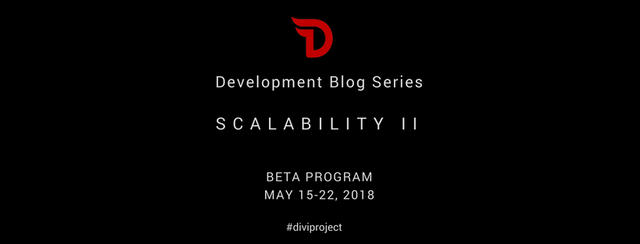Divi Beta Notes: Scalability II
My last post explained how the number of miners in proof-of-work (PoW) cryptocurrencies and the size of the consensus pool in proof-of-stake (PoS) cryptocurrencies limit the scalability of each. Anyone who claims that this isn’t the case for their coins bears the burden of proving all of the other cryptocurrency experts wrong.
As far as we know, there are only three viable workarounds for this problem. For Bitcoin, the only real option is to eliminate the need for scaling on the main network through the use of side-chains (e.g., Lightning). PoS cryptocurrencies can reduce the size of the consensus pool via a variety of methods including minimum stake size and delegated proof of stake (Steem is a particularly effective example of the latter). Finally, new blockchains (or existing blockchains with strong enough governance) can be designed to break into collections of inter-operable block-chains (“sharding”). For example, Ethereum is planning to move to sharding.
As far as Divi is concerned, what must be remembered is that what is most important is the features that our network provides and its opportunities for growth. Divi currently runs on a fork of Peercoin which is a PoS fork of an old version of Bitcoin (0.10 versus the current 0.15). We could upgrade our current PoS fork infrastructure so that it is running the newest version of Bitcoin – but Lightning is anything but a panacea and would need to be included in a substantial percentage of the heaviest usage wallets before it would have any real effect.
We could switch to run atop an empty new copy of Ethereum. This would also immediately give us an upgrade to having user-defined contracts. Unfortunately, Ethereum contracts have proven to have a raft of unsolved problems, and the planned upgrades to PoS and sharding are farther in Ethereum’s future than we prefer. The real killer, however, is Ethereum’s reliance upon gas to run transactions – which effectively prevents micro-transactions.
We could switch to run atop a new Eos blockchain. There is risk in going with something so new – but Dan Larimer’s two previous blockchains, Bitshares and Steem, are thriving in the top 40 and maintaining transaction rates better than Ethereum’s. Further, Eos is starting with sharding baked into its original design. Best of all, Steem has proven the flexibility of its economic model by running without fees and supporting micro-transactions as a necessary large part of its paid blogging ecosystem.
Indeed, the only choice that would be a truly bad one would be for us to roll our own brand new blockchain infrastructure. Just as we forked PIVX to start with the most advanced technologies of masternodes and proof of stake, we will continue to include as much existing proven infrastructure as possible. Market share and partnerships are the key to cryptocurrency success, and we have every intention of positioning ourselves to take full advantage of both wherever possible.
My technical take is that Eos would be the best choice – but the decision still has yet to be made. In any case, we will have all of Divi’s advantages in addition to those which come with the chosen infrastructure (not to mention those that could be provided by some of our proposed new partnerships). As I said in my last post, the Divi Project is adamant that we will have scalability on par with any other cryptocurrency.
This post is being co-published simultaneously here on the Divi blog
Visit the Divi Project at https://diviproject.org/ to sign up to have updates sent directly to your e-mail.

To listen to the audio version of this article click on the play image.

Brought to you by @tts. If you find it useful please consider upvote this reply.